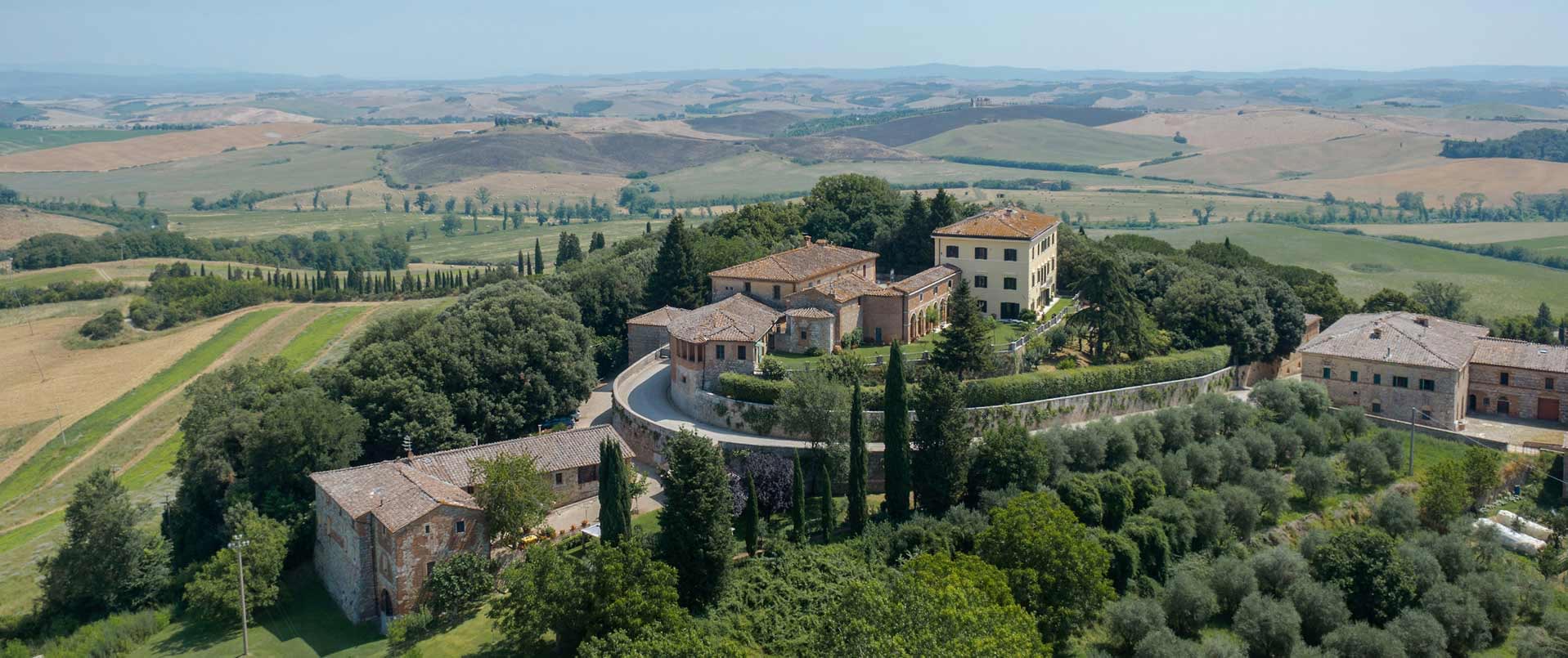
The Villa known as “Il Castellano” is located in the Municipality of Porto Sant’Elpidio in the province of Fermo. Situated between the Chienti and Ete Morto rivers and facing the sea, it stands on the site of a Roman outpost and a later medieval castle that belonged to the archdiocese of Fermo. Giorgio Araniti Comneo is said to have moved to this spot from Byzantium together with his wife, Princess Colonna of Corsica, in the 16th century.
In 1625 Annibale Maggiori Colonna di Leca Guerrieri, son of Marquise Cecilia Ricci from Macerata, constructed the central body of the Villa, which includes a panoramic watchtower. Starting from 1767, the Maggiori family, who had recently obtained a noble title and had become part of the Fermo patriciate, most likely became the sole owners of the Villa and had the chapel with the family tombs and the two wings that enclose the complex built.
Having been the countryside residence of some the most influential families in the Fermo region, with first the Guerrieri and then the Maggiori dynasty, the Villa, which had long combined the role of a summer residence with that of an economic and productive hub for the family’s large agricultural property, is today owned by the Scoccini family, who recently acquired and reunified the entire estate.
Due to the notoriety of its owners, the King of Sardinia Vittorio Emanuele I of Savoy, Joachim Murat, Jerome Bonaparte and other members of the Capitoline aristocracy from Rome have stayed at the Villa. Its architectural style, characterised by a substantial quadrangular building topped with a roof-terrace or ‘altana’, is found in only a few other examples of country residences dating from the early decades of the 17th century, such as the Villa belonging to Cardinal Decio Azzolino in Grottammare and Villa Alvitreti in Folignano.
The manor house is set apart from other residences dotted around the surrounding countryside not only because of its considerable size, but also due to the greater and more refined quality in terms of its architecture. The entire complex, which has been developed over time, consists of a central block used as a residence and ‘dépendance’ side buildings used for storage. Rural buildings, once used as warehouses, and a private chapel, which does not exceed the height of the longitudinal building bodies, complete the structure.
Referenced as the rural church of Santa Maria del Carmine and Sant’Antonio during the pastoral visit conducted in 1843 by Cardinal Filippo De Angelis, the chapel was reported to have been erected by Count Annibale Guerrieri, with religious ceremonies officiated by a priest during the celebrations of its dedication, as established in a deed dated 6 April 1686 by Notary Recchi and 16 July 1696 by Notary Petrini.
The exterior, decorated at the corners with brick pilasters and cornices, features a simple façade, completed by a tympanum and a modest bell tower with a single opening.
Places of interest in the vicinity
Loreto, Ancona, Fermo, Macerata, Ascoli Piceno, the Sibylline Mountains and neighbouring towns.
 Co-Working
Co-Working
 Film sets
Film sets
 Gardens
Gardens
 Pet Friendly
Pet Friendly
 Private events
Private events
 Residences
Residences
 Spirituality
Spirituality
 Visits
Visits
 Weddings
Weddings
 Cultural tourism
Cultural tourism  Cyclotourism
Cyclotourism  Excursions
Excursions  Gardens
Gardens  Hiking
Hiking  Historic Homes open to visitors
Historic Homes open to visitors  Nature
Nature  Sports
Sports  Walking itineraries
Walking itineraries